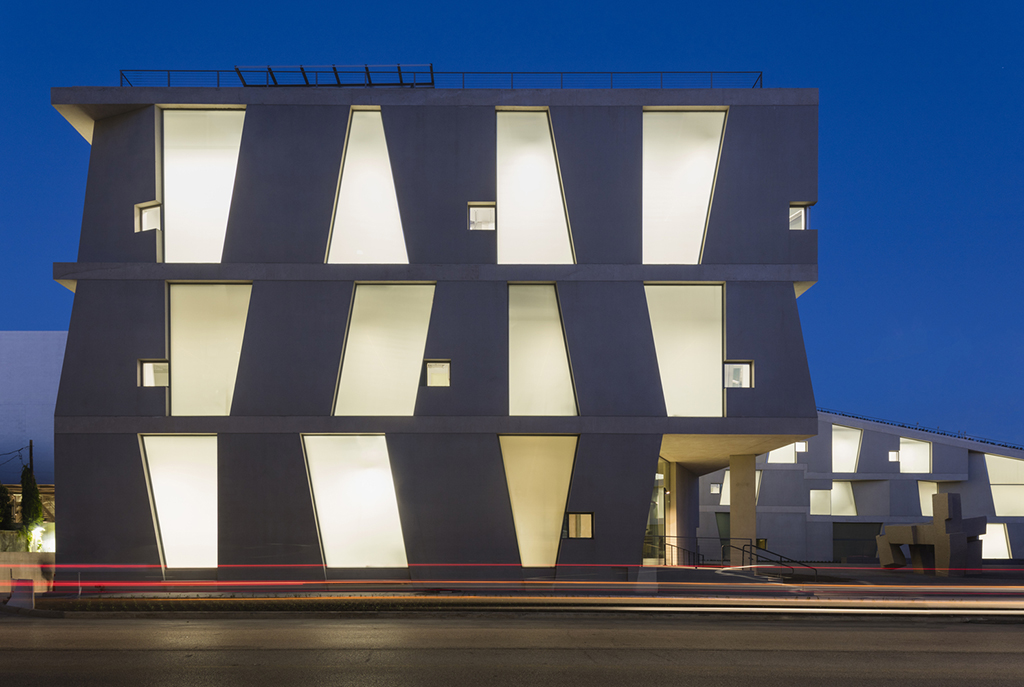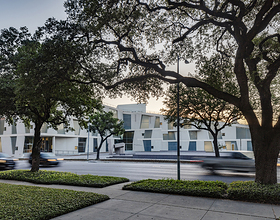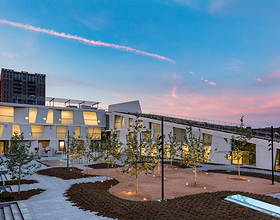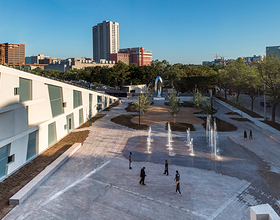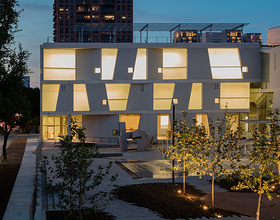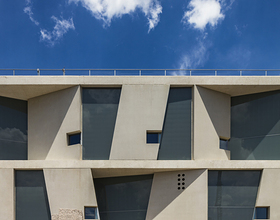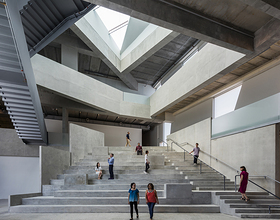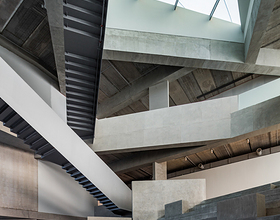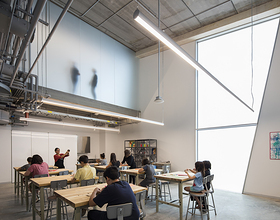GLASSELL SCHOOL OF ART
The three-story Glassell School of Art provides state-of-the-art studios and active social spaces within the 93,765-square-foot structure.
- The ‘L’ shape of the building overall is a campus space defining geometry, relating to the whole of the campus and providing the inclined plane access to the campus overlook terrace.
- Structure: the precast concrete structural elements, made in Waco, Texas, hold up the floors and define the exterior, incorporating the angle of the main incline. They also allude to the adjacent sculpture garden walls angled by Isamu Noguchi.
- The entry to the ‘L’-shaped building is placed at the main interior corner and is defined by a dissolution of the structure: an opening up which set the exhibition forum in torsion climbing vertically to the roof terrace overlook.
The Museum of Fine Arts, Houston redevelopment has the unique chance to expand the museum’s campus as an integral experience open to the community. Horizontal activity, transparency and porosity will unify the new MFAH, and provide inspiring and inviting public spaces. The lush Houston vegetation, refreshing sound, and reflections in water are all part of a new campus experience elevating the poetry of art.
The new ‘L’-shaped Glassell school shapes the Brown Foundation Plaza which extends the space of the Lillie and Hugh Roy Cullen Sculpture Garden by Isamu Noguchi.
The inclined plane of the roof shapes an amphitheatre and a public path to a rooftop garden overlooking the whole MFAH campus.
There are 3 gallery spaces in the building:
- At the ground level café space overlooking the plaza;
- At the Education Court connecting to a sculptural tunnel to the future Nancy and Rich Kinder Building;
- At the top of the forum on the second floor.
The main entry opens to a cascade of levels at the forum shaping an informal learning space directly opening to a 75-seat auditorium.
There are 23 studios shared between the Core Program and Junior School and 8 core-fellow studios. All of these have been designed with flexibility, great light, and fine proportions.
The simple planar structural pieces of sandblasted concrete begin with the angle of the inclined roof plane and give character to the inner spaces of the building in the spirit of simplicity and directness employed by Mies Van der Rohe’s original building. The concrete planes alternate with large translucent panels to provide ideal diffuse light to the studios. As an educational building it tells us how it is made. Winston Churchill said: “First we shape our buildings, and then they shape us.”
Photo credits: Richard Barnes
1870 Projects

